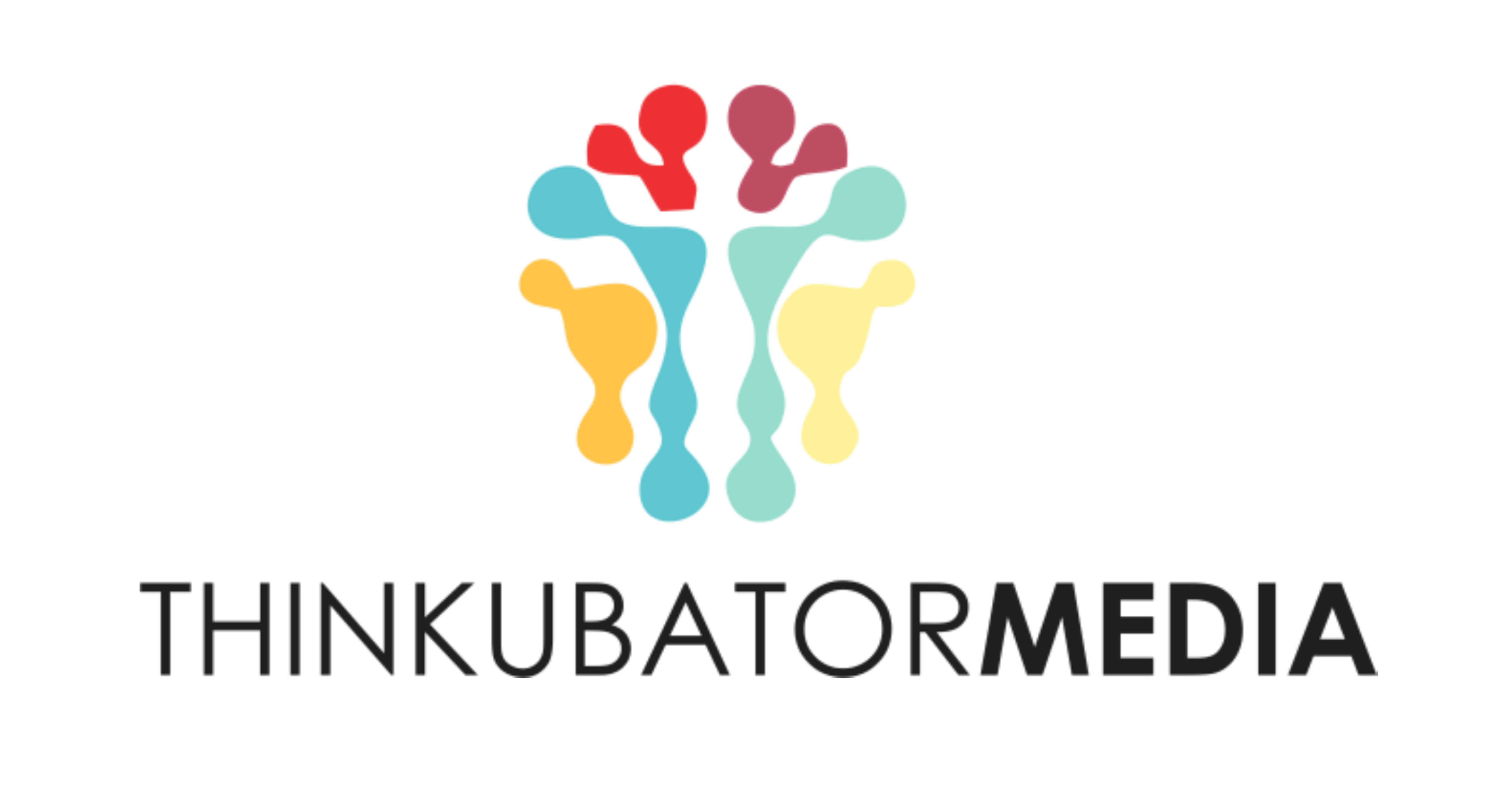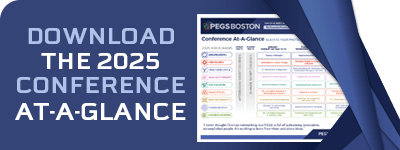Cambridge Healthtech Instituteの第17回年次
Predicting Immunogenicity with AI/ML Tools
AI/MLツールによる免疫原性の予測
Computational Tools Driving Drug Development Forward
医薬品開発を前進させる計算ツール
2025年5月13日 - 14日 EDT(米国東部標準時・夏時間)
Sunday, May 11
1:00 pmMain Conference Registration
2:00 pmRecommended Pre-Conference Short Course
SC1: In silico and Machine Learning Tools for Antibody Design and Developability Predictions
*Separate registration required. See short course page for details.
Tuesday, May 13
1:50 pmDessert Break in the Exhibit Hall with Poster Viewing
COMPUTATIONAL TOOLS FOR IMMUNOGENICITY ASSESSMENT AND PREDICTION
Advancing Antibody and Nanobody Humanization through Computational Design
 Pietro Sormanni, PhD, Group Leader, Royal Society University Research Fellow, Chemistry of Health, Yusuf Hamied Department of Chemistry, University of Cambridge
Pietro Sormanni, PhD, Group Leader, Royal Society University Research Fellow, Chemistry of Health, Yusuf Hamied Department of Chemistry, University of Cambridge
Novel approaches to antibody discovery, including computational design, require humanization methods agnostic of the antibody’s source. Besides low immunogenicity, immune-system-derived antibodies have favorable in vivo properties like long half-life and low self-reactivity. Designing nanobodies indistinguishable from human ones is therefore important. In this talk, I will present deep learning strategies for designing and humanizing antibodies and nanobodies indistinguishable from immune-system-derived ones, using tools like AbNatiV.
Humanness and Humanization of Antibodies and De Novo Designed Proteins
 David Prihoda, Bioinformatics Lead, MSD Czech Republic
David Prihoda, Bioinformatics Lead, MSD Czech Republic
Humanness evaluation and humanization of antibodies are well established, ranging from CDR grafting to deep learning methods. Here we present our contributions: OASis, a granular antibody humanness score, and Sapiens, a language model for antibody humanization, integrated into the open-source BioPhi web platform. Finally, we explore whether similar principles can be applied to de novo designed proteins, highlighting challenges stemming from computational complexity and fundamental biological constraints.
 Identifying tumor-specific antigens derived from protein translation errors
Identifying tumor-specific antigens derived from protein translation errors
 Kyle Hoffman, Applications Mgr, Applications & Service, Bioinformatics Solutions Inc
Kyle Hoffman, Applications Mgr, Applications & Service, Bioinformatics Solutions Inc
Hyperactivation of oncogenic pathways is associated with aberrant protein production. Peptides derived from cancer-specific aberrant protein production play a role in immune recognition and represent excellent therapeutic candidates. Here we identify tumor-specific antigens derived from protein translation errors that are unique to cancer cells using a mass spectrometry-based immunopeptidomics pipeline, called DeepImmu.
3:45 pmSponsored presentation (Opportunity Available)
4:00 pmRefreshment Break in the Exhibit Hall with Poster Viewing
SPEED NETWORKING
How Many New Contacts Can You Make?
 Kevin Brawley, Project Manager, Production Operations & Communications, Cambridge Innovation Institute
Kevin Brawley, Project Manager, Production Operations & Communications, Cambridge Innovation Institute
Bring yourself and your business cards or e-cards, and be prepared to share and summarize the key elements of your research in a minute. PEGS-Boston will provide a location, timer, and fellow attendees to facilitate the introductions.
Antibody Immunogenicity Risk Assessment with Pep2Vec
 Will Thrift, PhD, Principal Artificial Intelligence Scientist, Genentech
Will Thrift, PhD, Principal Artificial Intelligence Scientist, Genentech
Epitope presentation by MHC Class II (pMHC) is a necessary condition for an immunogenic response to antibody therapeutics. Thus, high-performance pMHC models are a cornerstone for immunogenicity risk assessment. We have developed Pep2Vec, a modular, interpretable, pMHC model that achieves state-of-the-art performance on a variety of presentation and immunogenicity datasets. We will show how to use Pep2Vec to distinguish between high and low immunogenicity (human and humanized) antibody drugs.
A Library-Based Approach for Mapping and Engineering HLA-II Epitope Landscapes
 Erik Procko, PhD, CSO, Cyrus Biotechnology; Adjunct Professor, University of Illinois, Urbana
Erik Procko, PhD, CSO, Cyrus Biotechnology; Adjunct Professor, University of Illinois, Urbana
Using a library-based method, HLA-II allele / epitope peptide interactions are measured at scale and epitope landscapes are mapped to protein sequences. To engineer reduced immunogenicity, thousands of single substitutions were tested to comprehensively identify transitional mutations that switch an epitope from HLA-II binding to non-binding. While existing AI/ML algorithms are poor predicters of transitional epitopes, these data are expected to improve ML models for engineering proteins with reduced immunogenicity.
Improved Antibody-Antigen Interaction Prediction Using Inverse Folding Latent Representations
 Paolo Marcatili, PhD, Head, Antibody Design, Novo Nordisk
Paolo Marcatili, PhD, Head, Antibody Design, Novo Nordisk
Inverse folding (IF) and protein large language models (pLLMs) have become useful tools for antibody variant generation, with generally good performance, but limited ability to find mutations that enhance the binding to the antigen. Here, we show how IF models can be used to predict B cell epitopes, how to extend this approach to estimate antibody-antigen interaction energy and find mutations that increase affinity, and to fine tune this model to increase its predictive power.
6:10 pmClose of Day
6:10 pmDinner Short Course Registration
6:30 pmRecommended Dinner Short Course
SC6: Developability of Bispecific Antibodies
*Separate registration required. See short course page for details.
Wednesday, May 14
7:15 amRegistration and Morning Coffee
WORKFORCE INNOVATION BREAKFAST
 PANEL DISCUSSION:
PANEL DISCUSSION:Workforce Transformation: An Evolving Approach to Achieve Innovation
(Continental Breakfast Provided) Co-Organized with Thinkubator Media
 Lori Lennon, Founder & CEO, Thinkubator Media
Lori Lennon, Founder & CEO, Thinkubator Media
This panel will explore the pivotal decisions shaping our approach to DEI, focusing on workforce innovation and transformation. Panelists will discuss how these strategies are driving impactful change within organizations, fueling innovation, and redefining workplace culture.
PLENARY KEYNOTE SESSION
Ex vivo and in situ Engineered Stroma Targeted CAR T Cells for the Treatment of Solid Tumors and Fibrosis
 Ellen Puré, PhD, Chair & Professor, Biomedical Sciences, University of Pennsylvania
Ellen Puré, PhD, Chair & Professor, Biomedical Sciences, University of Pennsylvania
Engineered chimeric antigen receptor expressing T cells (CARTs) have had a major impact on the treatment of hematopoietic cancers. Solid tumors however, are largely resistant to malignant cell-targeted CAR Ts due to a stroma-rich microenvironment. This talk will provide proof-of-concept for therapeutic efficacy of ex vivo and in situ engineered stroma-targeted CAR Ts in solid tumors and tissue fibrosis, and their capacity to synergize with chemo- and other immune-based therapies.
9:35 amCoffee Break in the Exhibit Hall with Poster Viewing
ENTREPRENEUR MEET-UP
Fostering Entrepreneurship and Models for Start-Ups
Natalie Galant, CEO of Paradox Immunotherapeutics and Termeer Fellow, and Catharine Smith, Executive Director of the Termeer Foundation, are co-hosting an entrepreneurship meet up.
Are you a founder or aspiring founder? Are you an academic entrepreneur? Join Natalie and Catharine and PEGS attendee founders and entrepreneurs for networking and discussion.
We will discuss existing resources for academic entrepreneurs, founders, and start-up leaders, and areas where the ecosystem can better support you.
IMMUNOGENICITY PREDICTION IN EARLY-STAGE DISCOVERY
Incorporating in silico Developability and Immunogenicity Assessments during Early Stage Discovery
 Tony Pham, Scientist, Biologics Engineering & Developability, AstraZeneca
Tony Pham, Scientist, Biologics Engineering & Developability, AstraZeneca
During early-stage discovery of antibody therapeutics it is important to consider not only target affinity but also developability attributes before selecting a lead candidate for further development. To facilitate this we have developed two tools ImmunoScreen and the InSiDe (in silico developability) pipeline for biologics discovery. These tools provide the ability to assess immunogenicity along with other interdependent risks such as aggregation and post-translation modification to guide lead selection.
Integrating Comprehensive in silico Immunogenicity Predictions into Bispecific Antibody Discovery
 Stewart New, PhD, Associate Director, Antibody Discovery, Incyte
Stewart New, PhD, Associate Director, Antibody Discovery, Incyte
Accurate in silico immunogenicity predictions and effective deimmunization strategies have the potential to significantly enhance the clinical success of therapeutic large molecules. This analysis presents an integrated in silico examination of the immunogenicity of two bispecific antibodies, alongside clinical data on the specificity of their respective anti-drug antibody responses. It offers insights into how these tools can be effectively utilized within drug discovery pipelines.
11:55 amSession Break
12:00 pmLuncheon Presentation (Sponsorship Opportunity Available) or Enjoy Lunch on Your Own
INTERACTIVE DISCUSSIONS
Interactive Breakout Discussions are informal, moderated discussions, allowing participants to exchange ideas and experiences and develop future collaborations around a focused topic. Each discussion will be led by a facilitator who keeps the discussion on track and the group engaged. To get the most out of this format, please come prepared to share examples from your work, be a part of a collective, problem-solving session, and participate in active idea sharing. Please visit the Interactive Breakout Discussions page on the conference website for a complete listing of topics and descriptions.
HLA Class II Peptide Presentation and Immunogenicity Screening of Therapeutic Antibodies with HLAIIPred
Mojtaba Haghighatlari, PhD, Senior Machine Learning Scientist, Pfizer Inc.
- Best practices in data preparation for machine learning of peptidomics datasets
- Novel deep learning approaches for predicting MHC antigen presentation and the modeling challenges
- Interpretability and explainability of the available deep learning models
- New screening strategies for predicting immunogenic hotspots in therapeutic antibodies
Predicting Immunogenicity with AI/ML Tools
Sivan Cohen, PhD, Senior Principal Scientist, Genentech
- Enhance AI/ML model performance for immunogenicity prediction by optimizing HLA-II selection and tolerance determination.
- What confidence level is needed for immunogenicity prediction algorithms to impact regulatory decisions
- How can in silico and in vitro approaches for immunogenicity evaluation be strategically integrated, especially when their data conflict?
- Developing AI/ML algorithms for B cell prediction - what does the future hold?
- Application of the in silico prediction tools for the immunogenicity of AAV.
IN SILICO STRATEGIES FOR NEW MODALITIES
Computational Prediction and Experimental Verification of Human Immunogenicity in Vaccine Design and Evaluation
 Alessandro Sette, PhD, Professor, Co-Director, Center for Vaccine Innovation, La Jolla Institute for Allergy & Immunology
Alessandro Sette, PhD, Professor, Co-Director, Center for Vaccine Innovation, La Jolla Institute for Allergy & Immunology
Our group has been at the forefront of studying adaptive immune responses associated with vaccination and microbial outbreaks of new and old pathogens. Examples include SARS, pertussis, Mpox, and avian influenza. Our work is also currently directed at preparation for potential new pandemics by combining computational and experimental methods to predict immune responses to viral and bacterial families of cancer. The technology developed in these contexts is of general applicability.
Immunogenicity of Novel Modalities: In silico Methods and Strategies to Mitigate Immunogenicity Risk
 Jochem Gokemeijer, PhD, Distinguished Scientist Biologics, Biologics Discovery, Johnson & Johnson
Jochem Gokemeijer, PhD, Distinguished Scientist Biologics, Biologics Discovery, Johnson & Johnson
Novel modalities such as CAR T and gene therapy have progressed in to the clinic and have shown remarkable efficacy. Just like any other biologic, these therapies have the potential to be recognized by the human immune system, resulting in various immune responses that can compromise patient safety and the efficacy of the therapeutic. Here we will discuss the particular challenges associated with immunogenicity and these modalities and methods and strategies to assess and minimize potential immunogenic elements. Immunogenicity can be an obstacle to efficacy for novel modalities. Cellular immunogenicity poses a challenging immunogenicity risk to mitigate and measure.
Immunogenicity Assessment in New Modality Development: T and B Epitope Prediction
 Xiaobin Zhang, PhD, Associate Director, Takeda Pharmaceuticals
Xiaobin Zhang, PhD, Associate Director, Takeda Pharmaceuticals
Biotherapeutics activate the immune system by the interactions with antigen presenting cells (APC), T cells and B cells. Identifying the immune hotspot is a critical step to deimmunize the drug candidates. In this presentation, we will introduce the factors that impact the immune response pathways, summarize the in silico prediction tools in immunogenicity risk assessment, and discuss multiple approaches to predict T cell and B cell epitope in drug candidate screening.
 Optimizing development-ability of Antibody Therapeutics
Optimizing development-ability of Antibody Therapeutics
 Jesper Sorensen, Head of Scientific Development , OpenEye, Cadence Molecular Sciences
Jesper Sorensen, Head of Scientific Development , OpenEye, Cadence Molecular Sciences
Developing an antibody from a hit or lead into a clinical candidate involves substantial optimization of the biophysical properties that affect large-scale production and long-term stability. We have developed a suite of antibody design tools in our modeling platform Orion® that assist in biophysical characterization and property optimization using a combination of physics-based simulation and AI. This talk will present some solutions to key problems in antibody design and development.
4:00 pmIce Cream Break in the Exhibit Hall with Poster Viewing
Machine Learning Methods for Antibody Design and Development
 Philip M. Kim, PhD, Professor, Molecular Genetics & Computer Science, University of Toronto
Philip M. Kim, PhD, Professor, Molecular Genetics & Computer Science, University of Toronto
I will cover our work on machine learning methods for antibody and protein design from both an academic and biotech perspective. Notably I will cover our methods for de novo design as well as for optimization. I will cover some use specific use cases, including optimizing developability characteristics using ML methods.
Incorporating Molecular Mimicry Features to Identify Immunogenic Hotspots in Antibody Therapeutic Sequences
 Patrick Wu, MD, PhD, Senior Scientist, Genentech
Patrick Wu, MD, PhD, Senior Scientist, Genentech
In silico prediction of CD4+ T cell epitopes frequently results in numerous candidates, yet ranking these epitopes by their potential to activate naive CD4+ T cells and induce anti-drug antibodies remains challenging. Our research suggests that epitopes resembling bacterial sequences increase immunogenicity risk in antibody therapeutics. By integrating molecular mimicry characteristics into predictive models, we can better identify immunogenic hotspots, thereby enhancing the safety and efficacy of biotherapeutic development.
Analyzing and Decreasing the Immunogenicity Potential of Biotherapeutics Using in Silico Approaches
 Michael Gutknecht, PhD, Principal Scientist II, Novartis Pharma AG
Michael Gutknecht, PhD, Principal Scientist II, Novartis Pharma AG
Immunogenicity potential assessment should be started as early as possible in the biotherapeutic development process to inform de-immunization approaches and to avoid resources spending on candidates with a high inherent immunogenicity potential. Oftentimes, this is only possible using in silico tools. In my presentation, I would like to introduce the audience to the in silico-based workflow we implemented to analyze and decrease the immunogenicity potential of biotherapeutics in early development.
Prediction and Mitigation of Immunogenicity of Proteins Given via SC Route
 Sathy Balu-Iyer, PhD, Professor, Pharmaceutical Sciences, SUNY Buffalo
Sathy Balu-Iyer, PhD, Professor, Pharmaceutical Sciences, SUNY Buffalo
The safety and efficacy of therapeutic proteins are undermined by immunogenicity driven by anti-drug antibodies (ADA). Proteins administered subcutaneously can suffer from enhanced immunogenic potential compared to intravenous administration. The talk will cover mechanistic insight into the subcutaneous immune response and our efforts to develop novel preclinical tools as well as a database to predict clinical immunogenicity as a human biology-based animal trial alternative.
6:40 pmNetworking Reception in the Exhibit Hall with Poster Viewing
7:40 pmClose of Predicting Immunogenicity with AI/ML Tools Conference
* 不測の事態により、事前の予告なしにプログラムが変更される場合があります。
アジェンダ・講演者・スポンサー更新
2025年 プログラム
表示する:

工学ストリーム

腫瘍ストリーム

多重特異性ストリーム

免疫療法ストリーム

発現ストリーム

分析法ストリーム

免疫原性ストリーム

新興治療ストリーム

機械学習ストリーム







 Talk Title to be Announced
Talk Title to be Announced












